Turtles are ancient living reptiles that have a hard shell to protect themselves from predators. The turtle's shell is composed of upper and lower parts, the upper part is called the carapace, and the lower part is called the plastron. They have a gentle temperament and do not bite or fight with each other. When encountering danger or being frightened, it retracts its head, limbs and tail into its shell. They live in many different types of habitats, including swamps, lakes, rivers, grasslands, and forests. Feed primarily on plants, but some species also eat insects, small invertebrates, and small fish. Because of their unique appearance and personality, turtles have become an excellent choice for family pets. The tortoise shell is their most striking feature. Many tortoise shells are full of beautiful patterns, and they are even indiscriminately killed by humans because of their beautiful armor. Below, the editor will take stock of the ten most beautiful turtles in the world, let’s take a look!
1. Money Turtle

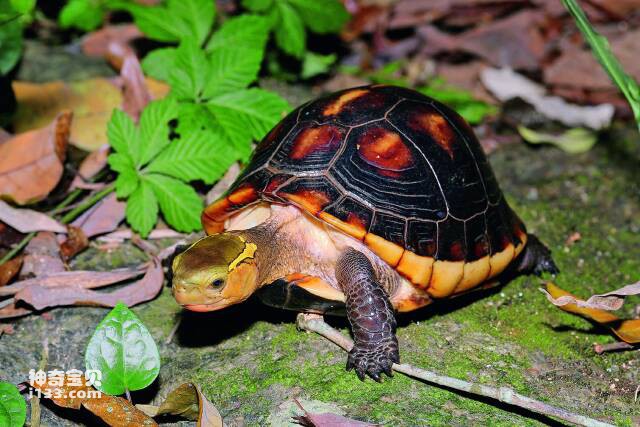
The money turtle is also known as the three-line closed-shell turtle. It has a brown-red carapace with three black stripes, a black ventral carapace, orange-red armpits and crotch, a waxy back of the head, and a light-orange shell on the throat and neck. Famous for turtles. Money turtles are docile, mild-tempered, and do not bite. Their species rarely attack each other. When encountering an enemy, they only have the ability to evade but not fight back. The money turtle is a precious animal resource and is full of treasures. It has important significance and economic value in medicinal, ornamental, craft making, edible and modern scientific research. The Money Turtle is considered a symbol of good luck in many cultures and it is believed that owning a Money Turtle will bring wealth and longevity.
2. Map turtle


The map turtle, also called the sawtooth-backed turtle, is a freshwater turtle that lives in North America and is found in lakes, rivers and other freshwater waters in Canada, the United States and Mexico. The marginal scute at the rear of the carapace of most map turtles also protrudes posteriorly, giving the rear edge of the carapace a distinctly jagged shape. Some species have large heads and jaws that allow them to crush snails and other molluscs. The most striking difference is the characteristic thin lines on their skin and scutes, which is where the name "map turtle" comes from because they look like contour lines and road maps on a map. This is unmatched by other turtles. They usually bask on rocks or branches, or dive into the water to feed. The map turtle is a very popular pet turtle. It is favored by breeders due to its exquisite appearance, docile personality, and wide range of food habits.
3. Diamondback Turtle
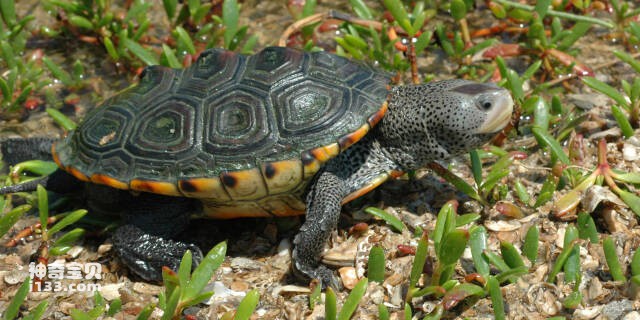

Diamondback turtles are aquatic turtles and are the only species in North America that can live in salty waters. There are 7 subspecies of diamondback turtles. There may be huge differences in carapace pattern, skin color, markings and shape between individuals. Making it more varied and charming. The color of the turtle shell is brown to gray, and the body color can be gray, brown, yellow or white. All diamondback turtles have unique patterns on their bodies and heads, with the only common features being their richly textured, concentric patterns of diamonds and diamond-shaped scutes. Diamondback turtles are a protected species due mainly to habitat destruction and illegal collection. There are now many groups and organizations dedicated to protecting and restoring the diamondback turtle's habitat and conducting relevant education and publicity.
4. Eagle-billed turtle
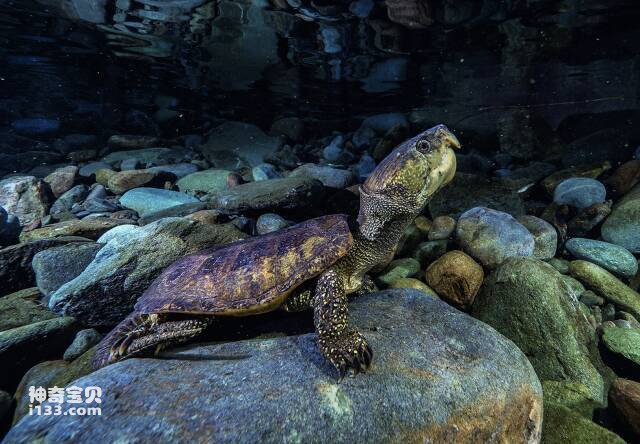

The scientific name of the eagle-billed turtle is the ratite turtle. Its appearance is characterized by its long and hawk-beak-shaped mouth, and its carapace is oval or nearly round, brown or black, with obvious white spots and stripes. Their legs are short and suitable for swimming in water, but they can also crawl on land. Ratite turtles are the most ferocious among the freshwater turtles in my country. Unlike other turtles that passively defend themselves, ratite turtles often take the initiative to attack. When threatened, it will open its eyes angrily, hiss in its mouth, and open its mouth to bite. Once caught, it will scratch its mouth and bite with its claws, lash its tail left and right, and resist violently. Ratite turtles have long claws and long legs, and can crawl very quickly, at 7 to 8 meters per minute. The swimming ability is also very strong. When on the water surface, the end of the tail is raised and the limbs are paddling to swim freely. The eagle-billed turtle is a threatened species, mainly affected by habitat destruction and illegal harvesting. There are already many groups and organizations dedicated to protecting and restoring the eagle's beak turtle's habitat and conducting relevant education and publicity.
5. Burmese tortoise
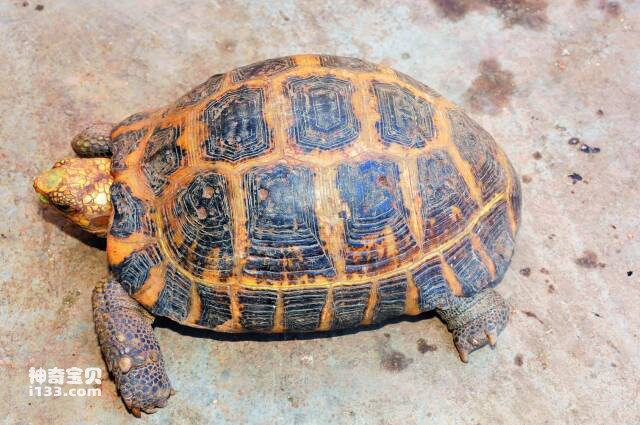
The Burmese tortoise, also known as the yellow elephant tortoise, dragon-clawed tortoise, etc., is a large tortoise and one of the largest tortoises in Southeast Asia. They live in tropical rainforests and forests, including in Thailand, Myanmar, Malaysia, Indonesia and other places. The appearance of the Burmese tortoise is characterized by a brown or black round back shell with obvious ridges and dark patches. The body length can reach more than 60 centimeters and the weight can exceed 50 kilograms. Their heads are relatively large, their mouths are tapered, and their color is dark brown or black. The hind limbs of the Burmese tortoise are thicker than the forelimbs, and the claws are larger. Burmese tortoises are docile, spiritual, and mainly herbivorous. They like to bask in the sun and dig holes to hide themselves at night. The number of Burmese tortoises has declined dramatically due to overhunting and habitat loss. They are now listed as an endangered species and are protected.
6. Eye-spotted turtle
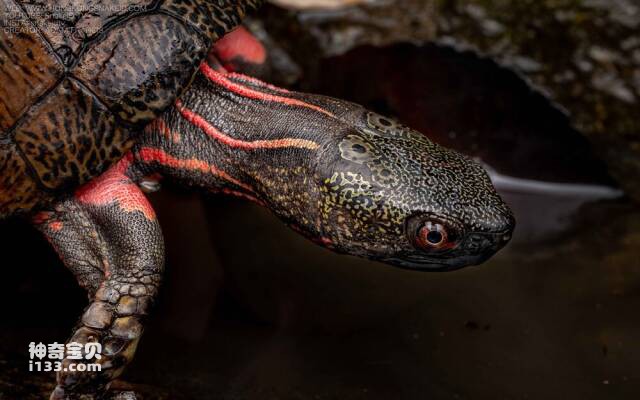
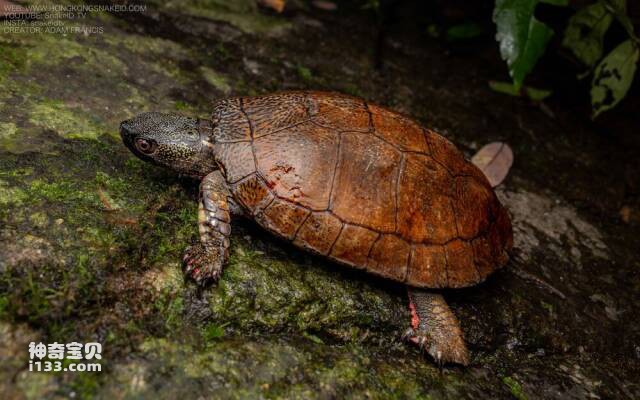
The eye-spotted turtle is a small tortoise belonging to the family Microcephalidae. They are distributed in southern China, Taiwan, Vietnam and other regions, mainly inhabiting mountain rivers and ponds. The appearance of the eye-spotted turtle is characterized by a round or oval back shell, usually dark brown or black in color, with yellow edges and white spots, and obvious yellow eye spots around the eyes. Body length is generally between 10-20 cm, with males slightly larger than females. The eye-spotted turtle is an omnivore and feeds on insects, small invertebrates, aquatic plants, etc. They love to bask in the sun and will dig burrows at night to temporarily hide themselves. Eye-spotted turtles are very docile pets and are therefore loved by many hobbyists. But at the same time, it is also important to note that the number of wild eye-spotted turtles has declined sharply, so when choosing to raise eye-spotted turtles, you should choose legal sources and do not purchase illegal wild animals.
7. Star-spotted turtle
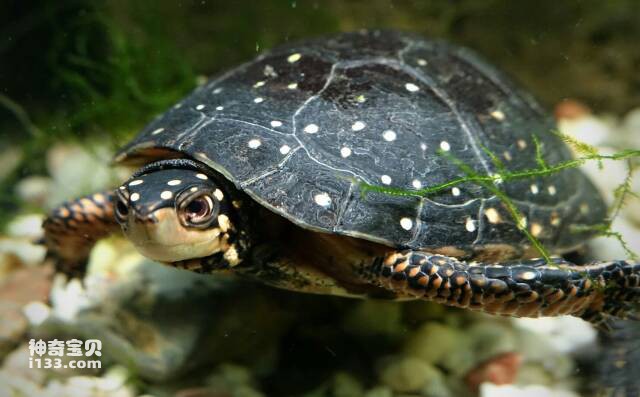
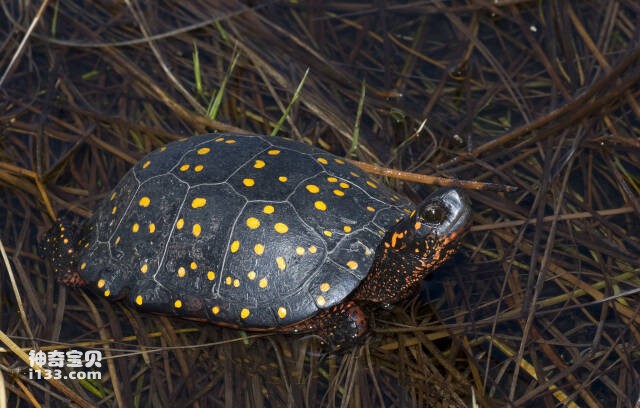
The star-spotted tortoise is a small tortoise also known as the Indian star tortoise or red-legged tortoise. They are native to South Asia and are found in India, Bangladesh, Sri Lanka and other places. The back shell of the star-spotted turtle is round or oval, brown or black in color, with obvious yellow or red star spots. The abdomen is light yellow or milky white. Body length is generally between 15-30 cm, with males slightly larger than females. Star-spotted turtles typically live longer, up to 50 years or more. Star-spotted turtles mainly feed on plants, including leaves, fruits, etc., and will also eat small amounts of insects and small invertebrates. They like to bask in the sun and require a warm, moist environment. Star-spotted turtles are very popular pets, but it should be noted that the number of wild star-spotted turtles has declined sharply, so you need to choose legal sources when purchasing and do not buy illegal wild animals. At the same time, proper environment and food need to be provided when raising them to ensure that they are well cared for.
8. Yellow-throated water turtle
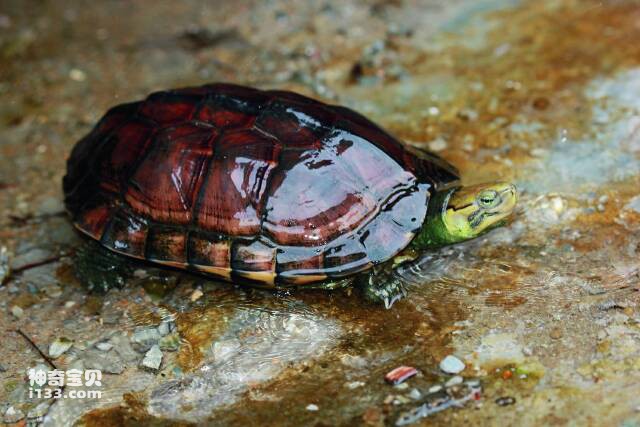
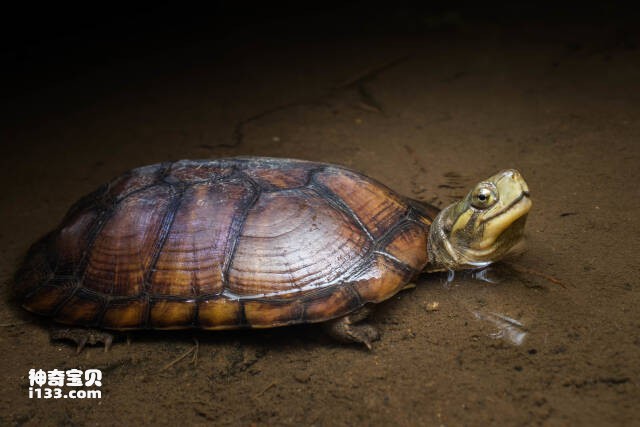
The yellow-throated water turtle is the most primitive and oldest species of water turtle. It is known as the "ancient stone turtle" among the people. Folks believe that this species of turtle has the same feng shui effect as the money turtle to help the owner improve wealth and career luck. The back shell of the Yellow-throated Terrapin is brown or black with yellow-orange patches on it. The abdominal shell is light yellow or milky white with black stripes. Their heads are also black, and their necks are distinctly yellow or orange. Body length is generally between 25-40 cm. Yellow-throated water turtles mainly feed on plants, such as aquatic plants, leaves, fruits, etc. They also eat insects, worms, and small fish. The yellow-throated terrapin has a gentle temperament and is easy to train, making it an ideal choice for freshwater turtle enthusiasts.
9. Leaf turtle
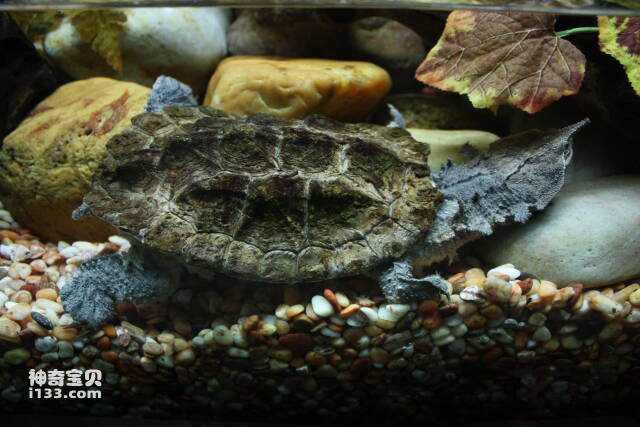
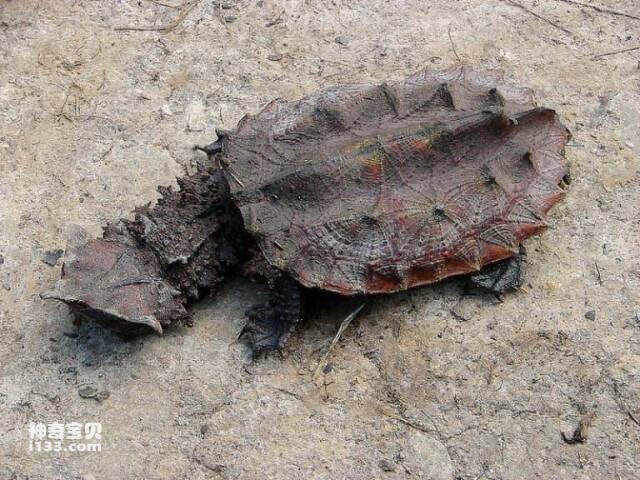
The leaf turtle is a large aquatic turtle and the oldest living reptile. It is a sedentary turtle with a triangular flat head, a tubular nose and a horn-like part. The chin has three tentacles and four filamentous tentacles. It is shaped like a dead leaf and is yellow in color. Visible in the lake. When a dead leaf turtle is attacked, the turtle can retract its legs into its shell, but its tail and head cannot be retracted. It is carnivorous and feeds on worms, snails, shrimps and small fish, as well as the stems and leaves of plants. The leaf turtle has a very strange protruding nose, which is equivalent to a diver's snorkel and helps it dive. Its biggest hobby is to sit still for long periods of time, because the leaf turtle is a very inactive creature. The appearance and habits of the dead leaf turtle are very unique and are loved by some turtle enthusiasts. However, this turtle is difficult to raise and artificially reproduce, and only a small amount is sold in the Chinese market.
10. Flame Turtle
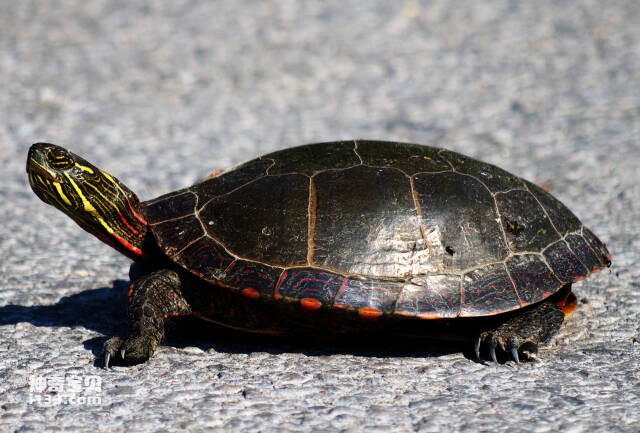
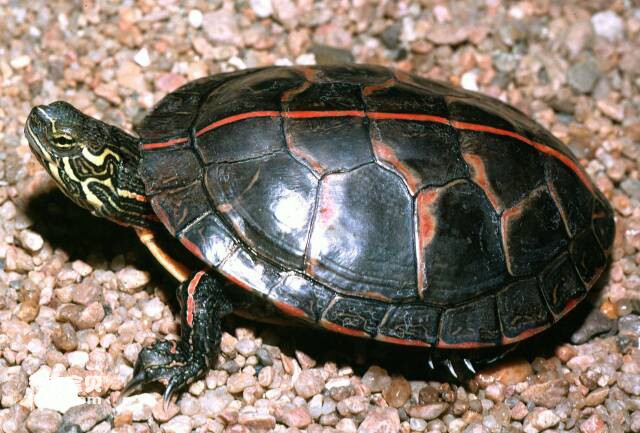
The scientific name of the Flame Turtle is Painted Turtle, which is a small freshwater turtle. The head is dark olive color, with several light yellow vertical stripes on the side, extending to the neck. The carapace is dark gray with green edges. There is no red vertical stripe in the center of the carapace. There are red curved stripes on the marginal shield. The carapace is oblong and the rear marginal shield is not serrated. The center of the plastron has brown stripes and markings. The limbs are dark green with light yellow stripes. The tail is short. Painted turtles are small ornamental turtles. They are petite and cute, rich in color, and can make some funny moves, so they have ornamental value. Breeding objects are mostly placed directly in the aquarium for breeding and viewing.
The top ten most beautiful turtles in the world. This list is mainly based on searching relevant online platforms to find various types of turtles, and based on their appearance, popularity, and popularity. If you have any questions, please leave comments/criticisms at the end.
animal tags:
We created this article in conjunction with AI technology, then made sure it was fact-checked and edited by a Animals Top editor.